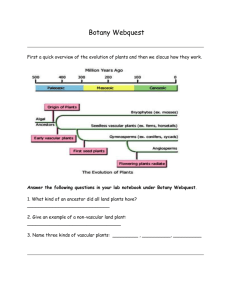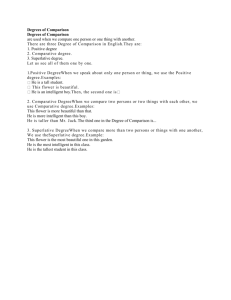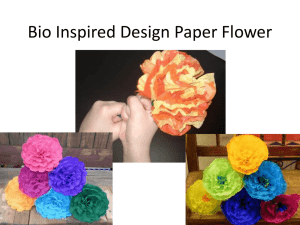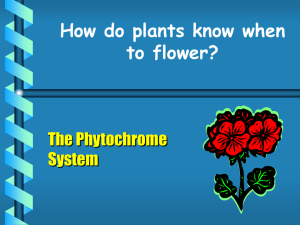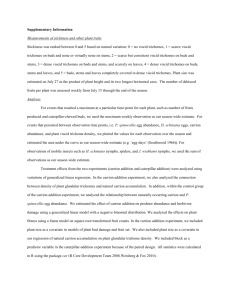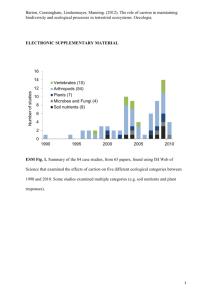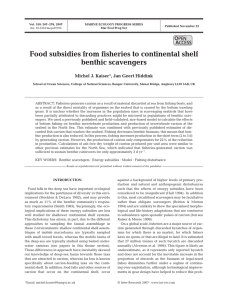Carrion flower is a succulent, prostrate herb with 4
advertisement
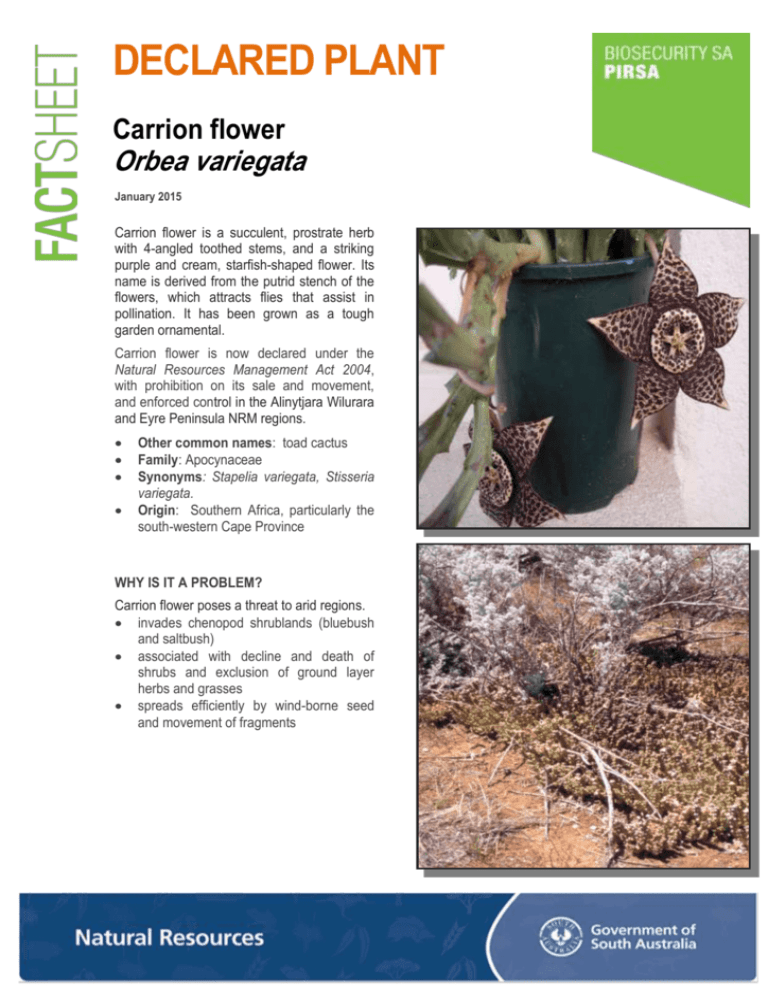
DECLARED PLANT Carrion flower Orbea variegata January 2015 Carrion flower is a succulent, prostrate herb with 4-angled toothed stems, and a striking purple and cream, starfish-shaped flower. Its name is derived from the putrid stench of the flowers, which attracts flies that assist in pollination. It has been grown as a tough garden ornamental. Carrion flower is now declared under the Natural Resources Management Act 2004, with prohibition on its sale and movement, and enforced control in the Alinytjara Wilurara and Eyre Peninsula NRM regions. Other common names: toad cactus Family: Apocynaceae Synonyms: Stapelia variegata, Stisseria variegata. Origin: Southern Africa, particularly the south-western Cape Province WHY IS IT A PROBLEM? Carrion flower poses a threat to arid regions. invades chenopod shrublands (bluebush and saltbush) associated with decline and death of shrubs and exclusion of ground layer herbs and grasses spreads efficiently by wind-borne seed and movement of fragments DESCRIPTION Habit: succulent herb with thick, sprawling, succulent stems to 15-25 cm long x 1-2 cm wide, grey-green becoming purplish when exposed to bright sun. Leaves: represented by conical teeth along the stems. Flowers: five-lobed, shaped like starfish, 5-7 cm across with creamy yellowish-green background covered in purple to purplish-brown splotches. Flowering time - late summer to autumn. Fruit: A pair of cylindrical pods from each flower, splitting open to release a fluffy seeds. HOW IT SPREADS The outer sheath of the fruit peels back to expose a mass of seeds, each with a tuft of hair awaiting wind dispersal. Carrion flower can also spread vegetatively via stem fragments moved by people, machinery, animals or water. HABITAT Carrion flower can be found growing on both exposed and sheltered sites in arid regions. It can be located on hill tops and stony rises, and in association with blue bush and other chenopods. DISTRIBUTION Carrion flower has naturalised on north-eastern Eyre Peninsula (Whyalla – Pt Augusta region) and is an occasional garden escape in other parts of South Australia. It is also naturalised in Western Australia, New South Wales and Queensland. WHAT CAN YOU DO? For more information Contact your local Natural Resources Centre for information on controlling declared weeds: Seek control advice if you have this weed. Select alternative plants to replace invasive species. Read ‘Grow Me Instead’ for suggestions. www.naturalresources.sa.gov.au Further weed control information is also available at: www.pir.sa.gov.au/biosecuritysa Carrion flower pot plant, flower close-up and stems – Julie Dean. Disclaimer: This publication is provided for the purpose of disseminating information relating to scientific and technical matters. The Government of South Australia does not accept liability for any loss and/or damage, including financial loss, resulting from the reliance upon any information, advice or recommendations contained in the publication. The contents of this publication should not necessarily be taken to represent the views of the participating organizations.

